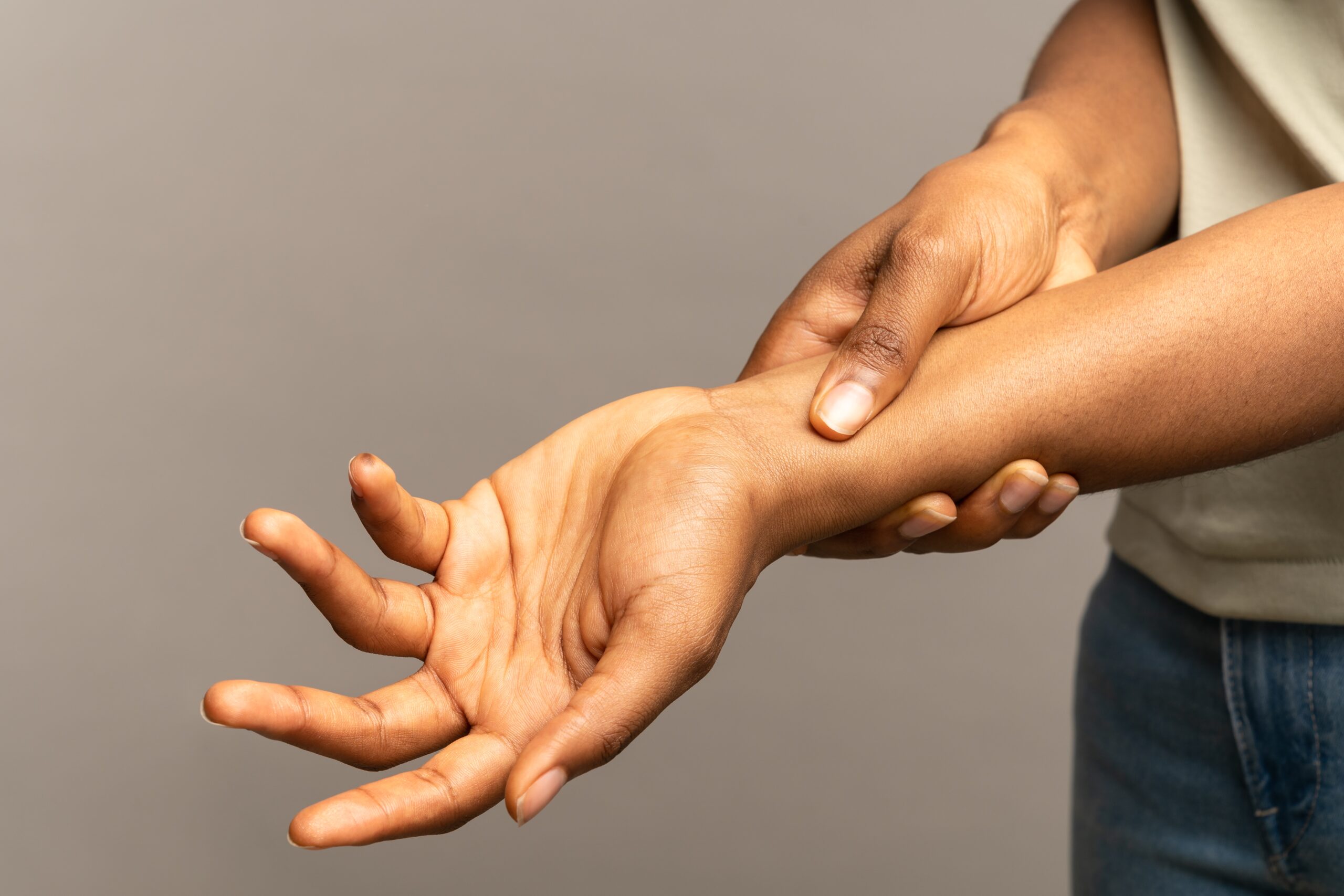Unlocking Relief: The Benefits of Nerve Flossing in Alleviating Carpal Tunnel Syndrome

Carpal tunnel syndrome (CTS) is a prevalent and potentially debilitating condition that affects the median nerve in the wrist, resulting in a constellation of symptoms including numbness, tingling, and weakness in the hand and arm. This common peripheral neuropathy impacts approximately 5% of the general population with a higher incidence in women and office workers due to repetitive hand and wrist movements.

As the most frequent peripheral neuropathy, CTS accounts for a staggering 90% of all such cases. Its progression can lead to significant impairments, including muscle atrophy, diminished hand strength, and reduced dexterity. These symptoms not only affect physical capabilities but also have far-reaching consequences on an individual’s quality of life, ability to perform daily activities, mental well-being, and social engagement.
It is estimated that 61% of patients with CTS avoid taking surgical options due to post-operative complications and costly surgical procedures, thereby opting for conservative intervention for long-term relief of the symptoms.
Chiropractic care offers a comprehensive and effective treatment for carpal tunnel syndrome, addressing the condition from multiple angles. Skilled Chiropractors employ a range of sophisticated techniques to alleviate CTS symptoms including manipulation techniques on the cervical spine, gentle mobilization of the wrist and elbow, ultrasound and electric stimulation, stretching and strengthening exercises, instrument-assisted and manual soft tissue mobilization, and strategic bracing for support and protection.
Recent studies have unveiled a game-changing adjunct to Chiropractic treatments for CTS: Nerve Flossing
This innovative self-treatment technique, which patients can perform both in-office and at home, has been shown to significantly enhance outcomes and accelerate recovery times. By incorporating Nerve Flossing into a comprehensive treatment plan, Chiropractors are now able to offer patients a powerful combination of professional care and self-management strategies. This holistic approach not only provides immediate relief but also empowers patients to take an active role in their healing process leading to more sustainable and satisfying results.
A recent study out of the Journal of Clinical Medicine titled Neurodynamic Techniques in the Treatment of Mild to Moderate Carpal Tunnel Syndrome
A Systematic Review and Meta-Analysis (Zaheer, 2023) reviewed 12 RCTs with assessments on 1003 participants in order to establish the effectiveness of neurodynamic techniques (nerve flossing) as a non-surgical treatment option for CTS. Primary outcome measures included outcomes from the Boston carpal tunnel syndrome questionnaire, while secondary outcomes included nerve conduction velocity, pain, and grip strength.
This article demonstrated significant benefits of neurodynamic modulation techniques such as nerve flossing to treat CTS and specifically that it reduces symptom severity, pain, and motor latency, while at the same time improving nerve conduction velocities. Although grip strength was not significantly different, pain was reported as significantly reduced. This study demonstrates a clear benefit of neurodynamic techniques to improve recovery of CTS.
Manual therapy facilitates nerve gliding through various techniques including soft tissue and wrist joint mobilization and neurodynamic techniques. (Basson, 2017) Neurodynamic Modulation (NM) involves three key treatments, (1) functional massage of the descending part of the trapezius; (2) wrist opening and closing; and (3) gliding and tensioning mobilization of the median nerve through nerve flossing. As the median nerve glides longitudinally during the upper limb movements, NM promotes the normal physiological and mechanical movement of the nerve in CTS.
Nerve flossing techniques aim to move the nerve along its distribution by lengthening or shortening the path that the nerve must travel. Although this article demonstrates its effectiveness for the median nerve it can also target the ulnar, and radial nerves as well. There are two types of Nerve Flossing Exercises: (1) Nerve Gliding and (2) Nerve Tensioning. Nerve Gliding encourages the nerves to glide normally as you move your joints which is performed by pulling the nerve from one end and shortening it from the other end.
Nerve Tensioning entails tensioning one end of the nerve while simultaneously releasing tension on the other end. Performing this repeatedly aims to release adhesions that have developed along the nerve. This is accomplished by stretching the nerve from both ends. It is recommended to start with gliding exercises and slowly work towards tensioning exercises. These exercises are simple, do not require equipment, and can easily be done at home.
To determine if these exercises will benefit your patient, have them reach their palm away from them in a pressing motion with their wrist extended and held. If they begin to get symptoms of numbness or tingling in any one of the following: thumb, first two digits, or palm, then they may benefit from nerve flossing exercises.
Start with Nerve Gliding exercises by following these steps:
1. Start with the involved arm extended out to the side of the body with wrist extended and palm facing out and the neck laterally flexed toward the involved shoulder.
2. Slowly bend the involved arm toward your face while internally rotating and flexing the wrist toward your ear while flexing the neck laterally away from the involved shoulder
3. Hold each position for two seconds and repeat ten times. The goal of this nerve gliding exercise is to stretch the nerve from the hand as we lessen the stretch of the nerve at the neck and then stretch the nerve at the neck and lessen the stretch of the nerve at the hand.
Next, have the patient perform a Nerve Tensioning stretch by following these steps:
1. Start with the involved arm extended out to the side of the body with the wrist extended and palm facing out and the neck in a neutral position.
2. While maintaining this arm position, laterally flex the neck away from the involved shoulder.
3. Hold this position for 2 minutes and repeat ten times.
While Doing Nerve Flossing Exercises
It is normal for your patients to feel increased symptoms like numbness and tingling while performing Nerve Flossing exercises. However, if these symptoms do not subside within 5 minutes after the exercise is complete then have them reduce the repetitions and the aggressiveness of the stretch.
Performing these exercises will help stretch and mobilize the median nerve, which can reduce pressure on the compressed nerve and help it glide more smoothly through its natural pathway. This can improve nerve function, increase range of motion, and help fluid flow more easily inside nerve cells. The next time you are treating a carpal tunnel patient, consider introducing these nerve mobilization techniques. Not only can they provide immediate relief, but they also empower patients to actively participate in their recovery process.
Patient education is crucial so be sure to demonstrate and explain the purpose of these exercises to ensure proper execution and maximize therapeutic outcomes.
Check out ProCredits’ Free course and Chiropractic Continuing Education Hours
A free one-hour course with ProCredits! Don’t miss this opportunity to see why ProCredits should be your go-to for Chiropractic continuing education and take your practice to the next level!
By taking advantage of this one-hour course, you will be able to further develop your skills and take your practice to a whole new level. This course is designed to provide you with valuable insights and hands-on experience that will help you enhance your knowledge and proficiency.
Whether you are a beginner or an experienced professional, this course has something to offer to everyone. It covers the latest techniques, tools, and best practices in your field and will allow you to learn from experienced instructors who are experts in their respective fields.
Sign up now and start learning, and while you’re at it, follow us on Facebook and subscribe to our Youtube channel for weekly updates!
Video Testimonials: Uncover Real Chiropractic Journeys
As you conclude your visit, why not delve into the real experiences of Chiropractors who’ve navigated their educational path with ProCredits? Through our video testimonials, you can gain an authentic understanding of the value and rewards of Chiropractic Continuing Education Hours.
In a profession as dynamic as chiropractic care, the need for continuous learning is paramount. Keeping abreast of the latest advancements, techniques, and research is the key to delivering top-notch patient care. Let the journeys of these Chiropractors guide your way with ProCredits.
References
Most Popular
Social Media
Get The Latest Updates
Subscribe To Our Weekly Newsletter
No spam, notifications only about new products, updates.
Related Posts

Unlocking Relief: The Benefits of Nerve Flossing in Alleviating Carpal Tunnel Syndrome
Carpal tunnel syndrome (CTS) is a prevalent and potentially debilitating condition that affects the median nerve in the wrist, resulting in a constellation of symptoms

Unveiling the Power of Interaction: Engaging with Expert Instructors in Chiropractic Education
In the realm of chiropractic education, the guidance of experienced and dynamic instructors is invaluable, offering practitioners not just knowledge but also insights born of

Unlocking Flexibility: The Convenience of On-Demand CE Courses with ProCredits
In today’s fast-paced world, juggling the demands of a busy chiropractic practice while staying current with continuing education requirements can be a daunting task. Recognizing

The Importance of Evidence-Based Practice in Chiropractic Education: Elevating Patient Care with ProCredits
Evidence-based practice forms the cornerstone of modern healthcare, including chiropractic care. In an era where patients expect the highest standard of care, it’s imperative for
